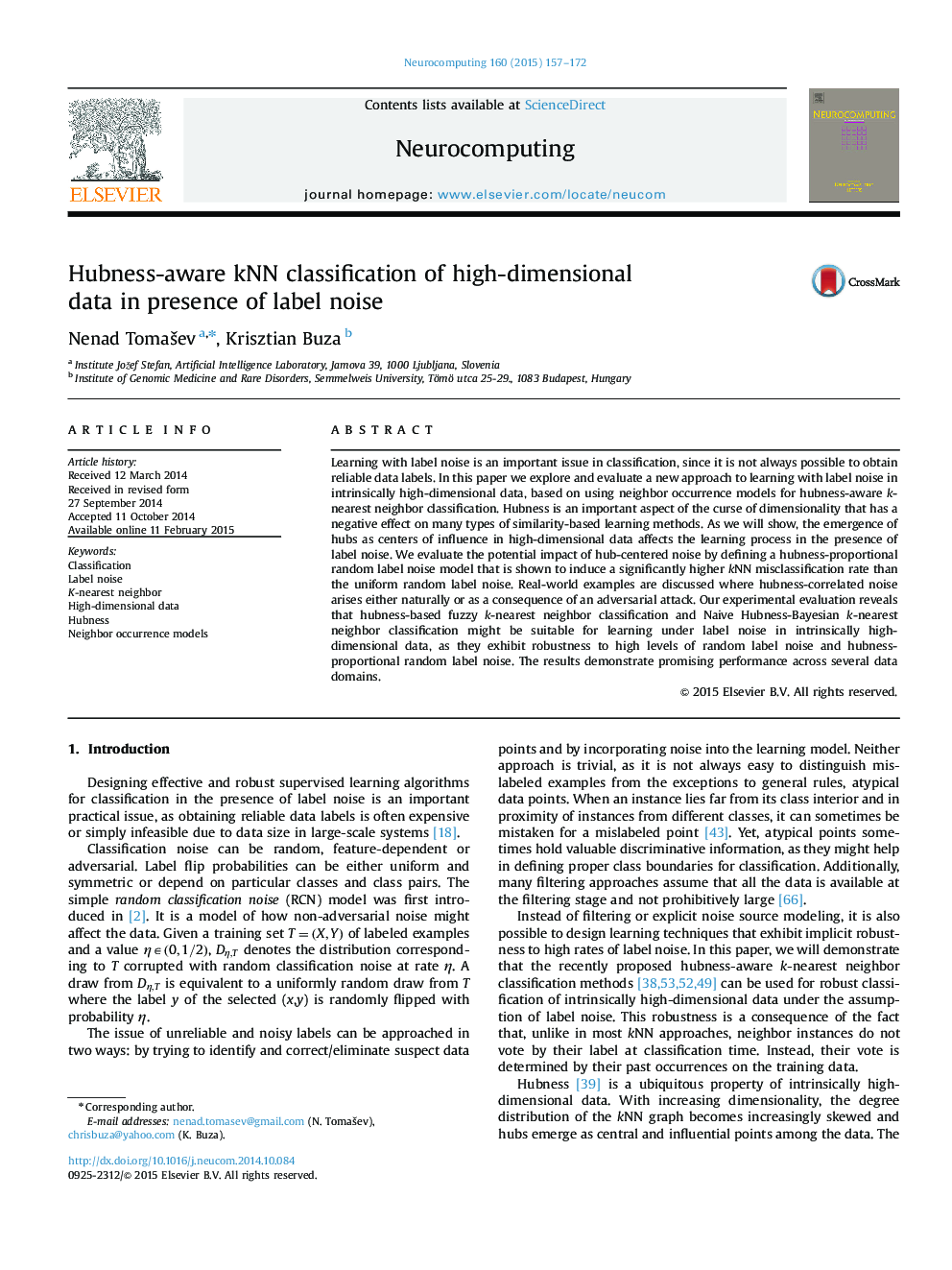| Article ID | Journal | Published Year | Pages | File Type |
|---|---|---|---|---|
| 406206 | Neurocomputing | 2015 | 16 Pages |
Learning with label noise is an important issue in classification, since it is not always possible to obtain reliable data labels. In this paper we explore and evaluate a new approach to learning with label noise in intrinsically high-dimensional data, based on using neighbor occurrence models for hubness-aware k-nearest neighbor classification. Hubness is an important aspect of the curse of dimensionality that has a negative effect on many types of similarity-based learning methods. As we will show, the emergence of hubs as centers of influence in high-dimensional data affects the learning process in the presence of label noise. We evaluate the potential impact of hub-centered noise by defining a hubness-proportional random label noise model that is shown to induce a significantly higher kNN misclassification rate than the uniform random label noise. Real-world examples are discussed where hubness-correlated noise arises either naturally or as a consequence of an adversarial attack. Our experimental evaluation reveals that hubness-based fuzzy k-nearest neighbor classification and Naive Hubness-Bayesian k-nearest neighbor classification might be suitable for learning under label noise in intrinsically high-dimensional data, as they exhibit robustness to high levels of random label noise and hubness-proportional random label noise. The results demonstrate promising performance across several data domains.
